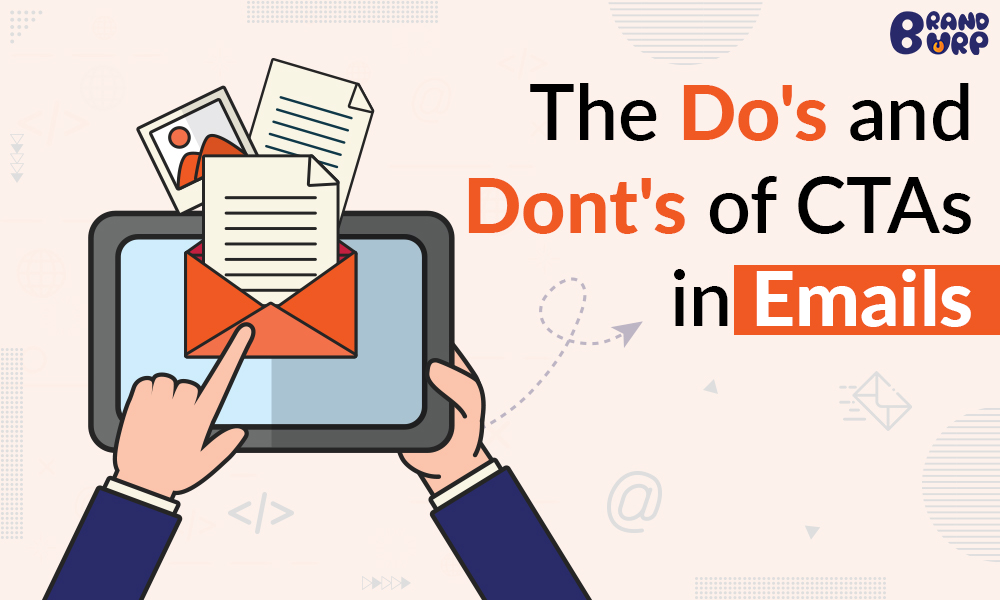
Email marketing has been around for a long time. It’s practical, cost-efficient, and overall, it’s still one of the most commonly used means of communication to reach out to your customers. One of an email marketer’s goals is to get the recipient to take action on the email.
So, you mustn’t neglect your Call-To-Action (CTA) buttons. If done correctly, your Call-To-Action can be powerful enough to increase conversion rates and drive traffic to your website. This post will give you a few dos and don’ts for designing effective calls-to-action in emails.
Why A Call-To-Action?
If you want to retain new customers and keep them coming back to your website, you need to give them a reason to do so. That’s where CTAs come in.
A Call-To-Action (CTA) is a link or other element on a landing page that encourages visitors to take a particular action. Call-To-Action buttons are essential elements you need to consider when designing or creating your landing page. You should place the Call-To-Action button in an accessible area for users to identify and should be simple to find, understand and use.
The most common CTA phrases are “click here,” “learn more,” “sign up now,” and “buy now.”
How Should You Design Call-To-Action?
The CTA is critical because it tells your readers what you want them to do next. If you don’t use a CTA, readers might not know what you want them to do, and they may leave without taking any action at all.
For example, if you send a Shopify order confirmation email to a customer, instead of just including order details and shipping confirmation, you can include a Call-To-Action and allow your customers to track the status of their order in real-time. As a result, you can direct your customers’ actions in this manner.
Now, let’s look at some things to keep in mind when designing CTAs.

1. Define the goal
Every business has a Call-To-Action. These are what you ask people to do when visiting your website. It’s essential to ensure your Call-To-Action is relevant and appropriate for your website. Try out different variations of the same Call-To-Action on several other pages to see which ones get the best results!
The most important part of defining a Call-To-Action is figuring out what you want someone to do.
For example, a Call-To-Action is essential for any blog. It helps you move your audience from passive readers to active listeners and creates movement in a post that might have otherwise lacked it.
There is a simple formula for creating a Call-To-Action that works like magic:
1) Define the purpose of your Call-To-Action
2) Ask the right question at the end of your post
3) Provide the solution upfront in your post’s introduction or opening paragraph
4) Write an excellent ending line that ties everything up nicely and leaves your reader feeling satisfied with their experience.
2. Take into account your tone
The language or tone tells the reader what you want them to do. It’s as simple as saying, “Click here!” or “Subscribe now!”
You might be tempted to get clever with your Call-To-Action language, but simple language works better in most cases. The best way to determine what you should say is to write out a few potential options and see which one feels more natural.
3. Look at the size, color, and placement
This section goes over the importance of the Call-To-Action and how it can improve your conversion rate. Where should you place the Call-To-Action on the page? How big should it be?
The Call-To-Action is the most crucial element on your landing page. Each element’s placement, size, and the color is vital for conversions. Call-To-Action should be above the fold, they should be prominent and easy to read, and their size should be in direct proportion to the amount of traffic you want them to generate.
4. Finally, test your Call-To-Action
You can have the most compelling CTA button and still not get click-throughs for CTR. That’s because your audience may not be interested in what you’re selling or promoting. To increase conversion rates, you need to test different versions of your CTAs against each other to see which one works best for your audience.
The three types of testing are A/B testing, multivariate testing, and landing page optimization. Each of these has its benefits and drawbacks, so it’s important to know what they are before deciding which one you choose to test your Call-To-Action.
Following this, we have compiled a list of clues to help you create CTAs that are most likely to cause conversion.

Do’s Of CTAs In Emails
Use powerful action verbs.
The copy of the CTA should encourage the email recipient to take the next step; the keyword here is “Action verb.” So select active action verbs such as ‘Download here,’ ‘Click here to read more,’ etc.,
Have a single Call-To-Action
It may seem unreasonable to limit your CTA options to one, but doing so may yield the best results. Having a lot of options, such as downloading a white paper, subscribing to an email list, or visiting your website, becomes very difficult for the subscriber to take action.
Use an eye-catching design.
Use the design to make your Call-To-Action stand out. Ensure that the CTA button color captures the reader’s attention and matches your brand color without distracting. When using a link, make it big enough to read it and use different colors to make it different from the background image.
Test and improve your Call-To-Action
Create more CTA variations and see which one produces the best results. It may be that one with an image or even a word works better than another, or that one color combination draws the readers’ attention better than another. You should check your CTAs regularly and use the results to tweak and improve them.
Make it clear to the audience
If you want your audience to download something, provide a clear link. For example, instead of “Download,” write “Click Here To Download.” Providing extra guidance may seem absurd to you, but it can make a difference to the busy ones to take action right away.
Don’ts Of CTAs In Emails
Don’t be too compelling.
Make the Call-To-Action fun and easily attract clicks, but not too compelling. Instead, focus on your CTA in showing that you are providing them with something of value.
Don’t use passive tone.
Ensure your Call-To-Action is clear enough for the reader to understand what they will get by clicking on the link or button. So just by writing ‘click here for more will not be enough. Instead, specify and point to your customers who may have a click value.
Don’t focus on everyone.
Even the most carefully crafted CTAs will fail to produce results if they are not targeted at the right people. Instead, focus your efforts on a segment of the audience who may be interested in your product/service.
Don’t be salesy
If you want to gain the trust and interest of website visitors, you have to deliver exactly what you promised. Exaggerating a false claim on your CTA will leave a bitter experience for your clients and make it impossible for them to come back. So make sure your CTA promises only what you are willing to offer.
Don’t link your CTAs to your website.
Instead, send them to a specific page. CTAs allow you to maximize conversions by directing traffic to one page closely related to your message. As a result, friction ensues because they know they have reached their destination. If you redirect them to the homepage, they’ll feel lost.
Wrapping Up!
The most critical step in creating a successful email campaign is to decide what you want your readers to do. Once you’ve decided on the desired action, it’s essential to create a CTA that will entice your readers to take action.
You can also use plenty of fun and creative things with your CTAs to encourage users to interact with your emails more often. We’ve discussed some of the most effective ways to create CTAs for your emails in this article. However, the best way to ensure that your CTAs are performing well is by testing new ideas and constantly improving on what you’re already doing right.
We hope these suggestions have been helpful!


 | 500+ Customer from BMBS to Fortune 500 companies
| 500+ Customer from BMBS to Fortune 500 companies






